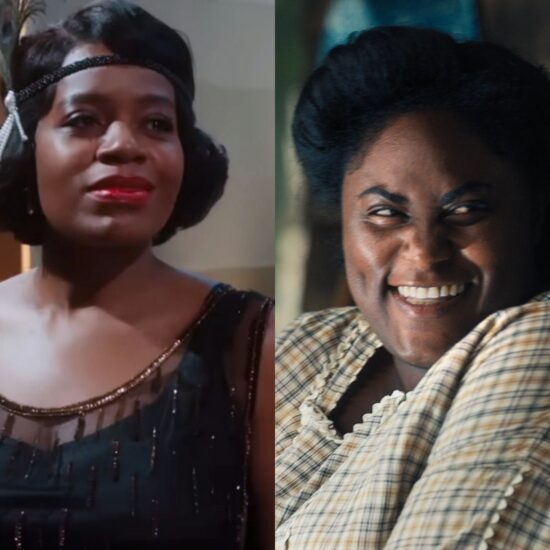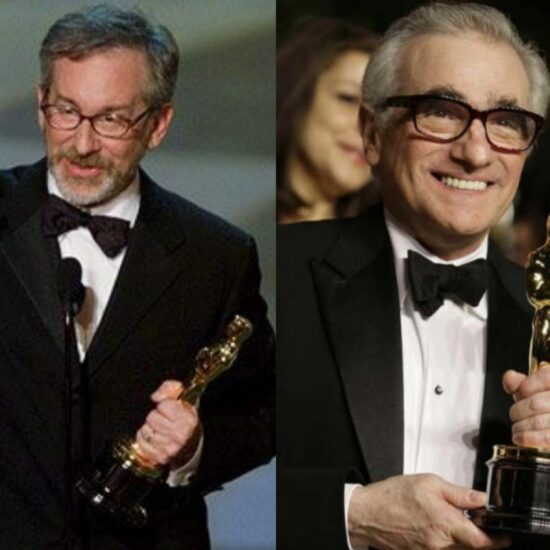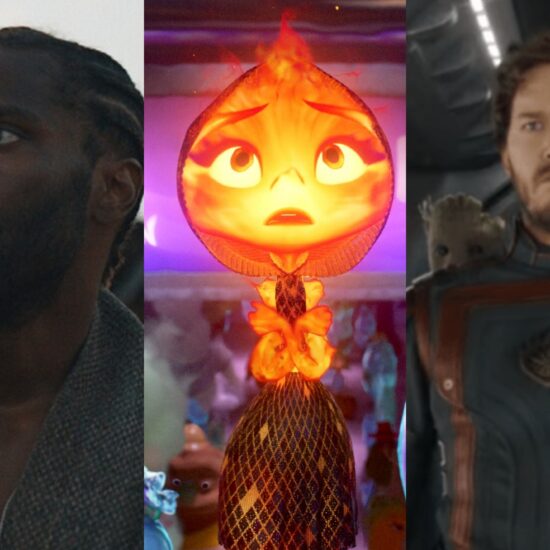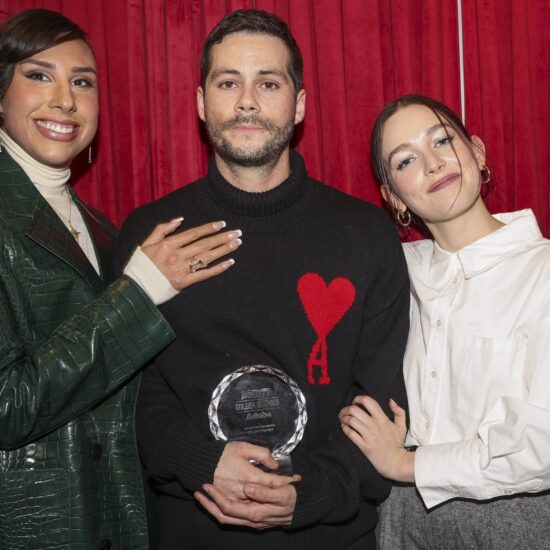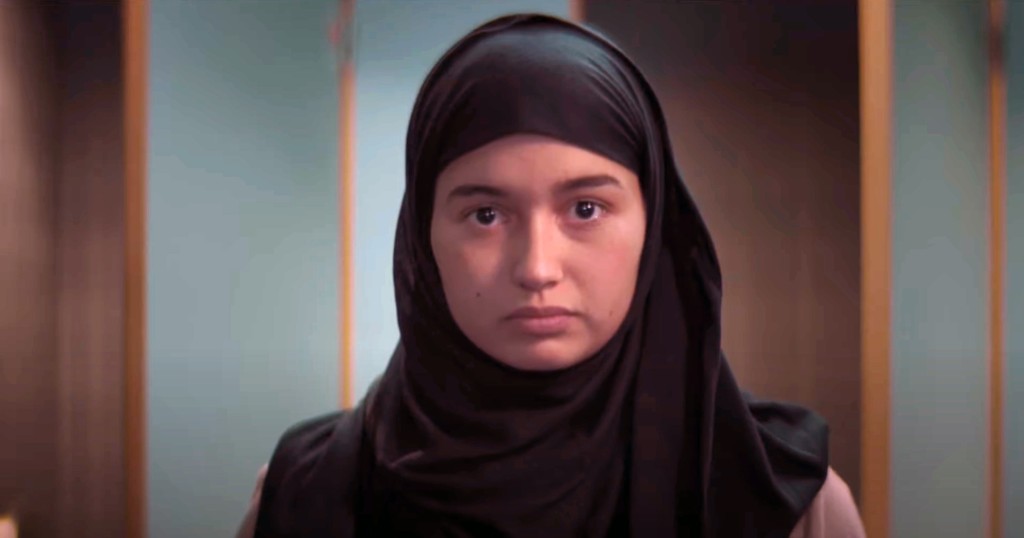
For Iranian director and co-writer Cyrus Neshvad, bringing the story of The Red Suitcase to life was a matter of urgency. The film follows the harrowing journey of a 16-year-old Iranian girl as she attempts to flee an airport undetected by the man that she’s been sent off to marry. One of the short’s most instrumental scenes involves the girl removing her hijab for her safety, but also at the detriment of defying her culture. Considering the timely release of his short film coinciding with the recent female-led anti-hijab protests in Iran, Neshvad explains, “I don’t want the movie to be political. I just wanted to give this message that we should be free to do what we want… when I did this movie, I said, ‘I want a woman who has the choice to take this off, even if it’s for her freedom, for her free will.’”
Here Neshvad discusses freedom for Iranian women, the importance of expression, and the symbolism behind The Red Suitcase.
DEADLINE: What was the inspiration behind making this short film?
CYRUS NESHVAD: During one dinner, my mother, who is connected with Iran because we have half of our families still living there, mentioned that women are disappearing for a ridiculous reason sometimes because their hijab [is considered to] not be [a] good [way to wear it], or they say something which is not accepted so they’re just disappearing and they were never appearing back. So, for me, this was frightening information. And this was back in 2020 when nobody was talking about this; I was terrified. So, I said, “I really want to do something about it,” because it’s also my home country. So, I decided to talk about this, even if it’s in a short movie. And then I decided to have this girl, an Iranian girl with a hijab on her hair. And that was the beginning of the story.
DEADLINE: One of the film’s most instrumental scenes involves the main character removing her hijab, which, as you mentioned, there are many circumstances where women can go missing or get killed for arbitrary reasons. Can you talk further about the impact of this scene? And what has the experience been like in your home country since the short’s release? Can it play at the Tehran International Short Film Festival?
NESHVAD: First of all, since this movie came out, it got more visibility because it was nominated for the Oscars. So, I got messages online and social media threats. It [couldn’t be] shown in Tehran because it’s being considered as an anti-Iranian movie and anti-Islamic, so I’ve got some threatening stuff there on social media. I don’t think any festival in Iran, even if they were for the movie, will show this. Everybody wants to be far from this movie in Iran because, if you are close to this movie, you’ll get problems. They are already circulating that Cyrus Neshvad is anti-Iranian.
DEADLINE: How are you handling that pressure?
NESHVAD: I mean the movie; I don’t want the movie to be political. I just wanted to give this message that we should be free to do what we want. We should be free to wear the hijab; we should be free to not wear it. But if we are not wearing it, it should not be damaging. And right now, the situation in Iran is like, you have to wear a hijab. The hijab means a lot in Iran; it’s a sign of the domination of the man, the domination of the patriarch, domination of the woman to serve. Domination that the man is allowed to have few women. Domination that the woman needs the consent of the man to do something.
[For example] when there’s a meeting, all the men are allowed to sit on chairs. The women have to sit on the floor. I have photos I could show you; they were in a meeting and taking notes while kneeling on the floor because they are not allowed to sit in the chairs. So, for today, the revolution in Iran is happening slowly; it’s a revolution brought by women. The women said, “We, as a protest, we don’t wear it anymore.” And in this scene today, it’s very important, because when I did this movie, I said, “I want a woman who has the choice to take this off, even if it’s for her freedom, for her free will.” And today, it’s got an even bigger message for what is happening in Iran.
DEADLINE: In the short, we only get a glimpse of her relationship with her dad. He seems genuinely worried about her by the end, but it’s also implied that we might be unable to trust him. What exactly is their bond? And what were you and co-writer Guillaume Levil trying to get across here?
NESHVAD: This is a situation in which we are with a girl we don’t know, but I don’t think it’s a matter of trust or not trust. It’s a matter of she understood her father is also a patriarch. It’s a part of this tradition. If she wanted to be free, she [realizes] that she has to get out of there. It’s not even about family, but rather the tradition. Even if she goes back [home], the tradition will not change. So, the message behind this is if you want to be free will, she had to get out of this patriarchal tradition. That’s why you see that moment when she cuts off her phone to ignore his messages, so she could choose to be free. And the freedom you get for such a price? For losing everything, losing this red suitcase, which was her heart. Losing her family, losing her only money. She has nothing anymore, but she has the free will, and that’s the most important thing.
DEADLINE: Wait, wow, the suitcase represents her heart?
NESHVAD: Yes. When I constructed the inside of the luggage, I said, “What she could have inside that could also represent her heart?” I wanted to have the inside be very tender and sensitive. She’s got tissue and paints a bit, so she has her drawings, a book, and even [Iranian] Pistache, which is very famous, especially when Iranian people are going abroad. So, she has all these tender things. And when [the suitcase was packed], I went to the main actress [Nawelle Ewad] and said, “Look, this is your heart now; how will you carry it?” And she wanted to put it on the floor. I said, “No, it’s not really luggage; it’s your heart.” And she didn’t really know, but then I suggested to hold it the way that she does in the movie, close to her chest instead of on the floor. The suitcase is also red, the color of the heart.
I wanted to have this idea of the film be the tenderness of this girl with her tender luggage, this red suitcase. And I want people to take this with them in their hearts also.
[This interview has been edited for length and clarity]









